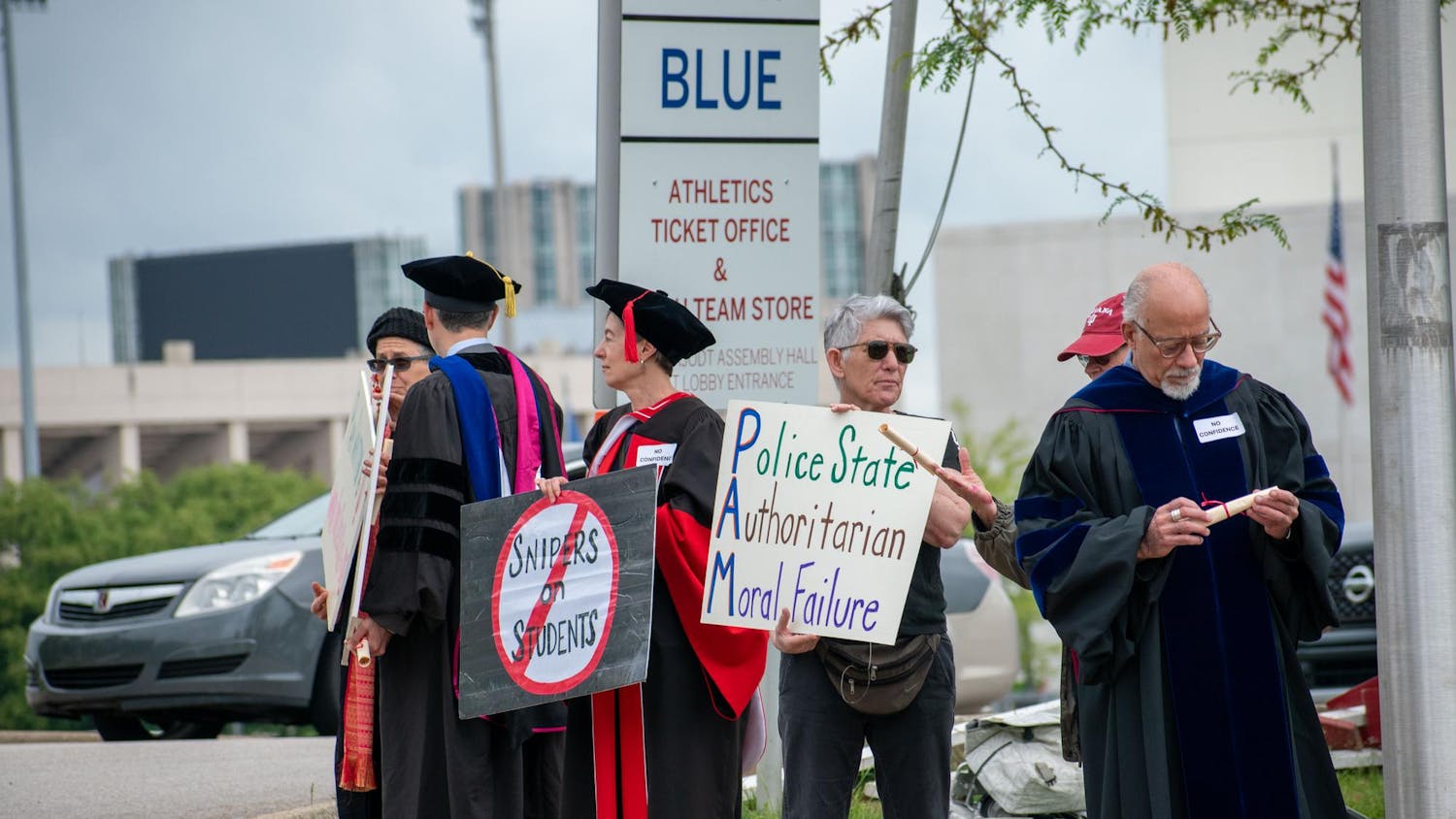As a non-binary student, freshman Spencer Biery identifies outside of traditional gender norms, which are based on the idea that there are only two genders: male and female.
Even months after former President Obama issued a letter to public schools directing them to allow students to use preferred bathrooms based on their gender identity, restrooms are still a prevalent issue in Biery’s life.
“They say you can use whichever one you’re comfortable with,” Biery said. “And I’m not comfortable going into a restroom with a bunch of guys, but I also know that if I went into a female restroom -- which I also don’t really identify with -- people would cause even more of a ruckus.”
Biery prefers they/them/their pronouns and lives in Collins Living Learning Center. They tend to use the men’s bathroom on their dorm floor because that is where they feel they blend in best.
Non-binary people often feel uncomfortable and unsure when using a bathroom labeled strictly male or female. According to the 2015 U.S. Transgender Survey conducted by the National Center for Transgender Equality, 59 percent of respondents said they had avoided using public restrooms in the past year out of fear of confrontations and other problems.
Barry Magee, the associate director for selection, diversity and inclusion at RPS, is working to fix this issue. Over 10 years ago, Magee started meeting with students who identify outside of the gender binary to ask their priorities in housing to feel more comfortable on campus.
“The number one thing that they talked about was bathrooms,” he said.
Since this initial meeting, Magee has helped to renovate residence halls and create all-gender bathrooms, also known as gender neutral bathrooms, wherever possible. He said it is an expensive task to renovate the residence halls due to the original plumbing in the buildings.
However, the decision was made years ago to spend several million dollars renovating all of the bathrooms in Teter and McNutt quads. Other dorms on campus have been incorporated into a long-range plan for different bathroom styles. In the meantime, Magee said the signs on already-existing, public, single stalls have been changed to all-gender.
“It was easy for us to do, and it was the right thing,” he said.
Magee said the existence of all-gender bathrooms benefits everyone, from non-binary students to fathers visiting their daughters on an all-girl floor.
All-gender bathrooms make the transition from a home to a college dorm. Though students still have to walk down the hallway to a bathroom, Magee said this was the case even in his home.
“But at least when I got there, I could lock the door,” he said. “My sixty friends didn’t walk in on me.”
The all-gender bathroom at the LGBTQ+ Culture Center acts as a safe place for people to bind themselves, director Doug Bauder said. Binding is when a person born female wraps their chest to make it appear that they no longer have breasts.
“There aren’t lots and lots of people that are transgender, but there are people that are, and providing for their needs is important,” he said.
Jingbo Li, a transgender female from China, said she didn’t even realize there were all-gender bathrooms on campus.
“I didn’t have any clear signal or direction to the gender neutral bathrooms, so I think maybe it’s a little bit hard to find,” she said. “I didn’t even hear of that.”
Li, a freshman studying psychology, said she had her first experience in an all-gender bathroom over winter break and felt more comfortable in it than a binary restroom.
In China, outside of large cities, all-gender bathrooms don’t really exist, Li said. She would like to see the bathrooms at IU advertised.
On campus, though, the bathroom Li chooses to use is dependent on the way she dresses and what is accessible. She said she uses the male restroom more currently because she dresses like a man but does occasionally use the women’s bathroom.
“I try to pick out the time when nobody’s there,” she said.
In a 2015 U.S. Transgender Survey, 27,715 people responded citing their different experiences as transgender.
Thirty-two percent of respondents said they limit their food and drink intake in the last year to lessen the need to use the restroom, and eight percent reported having a urinary tract infection or kidney-related problem in the last year from avoiding using the restroom.
“When the facilities aren’t sufficient, or don’t feel safe or don’t feel comfortable, people won’t use them, and that’s a lot of times the case for trans and non-binary people,” Biery said. “But I think people try to politicize it and make it into this thing when really people are trying to feel safe and are trying to use facilities that everyone else uses.”
Bauder said while there is room for improvement, people do recognize it is a new day and inclusive facilities are necessary on campus.
He said there is a verbal understanding that all new buildings on campus will include an all-gender bathroom. He believes while all-gender bathrooms may be an adjustment for some, eventually they will become common.
“Once you’ve had the experience, assuming it’s positive, it’s really not that big a deal even for an old guy like myself,” Bauder said. “It’s like letting black people sit at the counter, making room for handicap people. All these changes over generations take time, and then it’s like, ‘why didn’t we do this sooner?’.”






